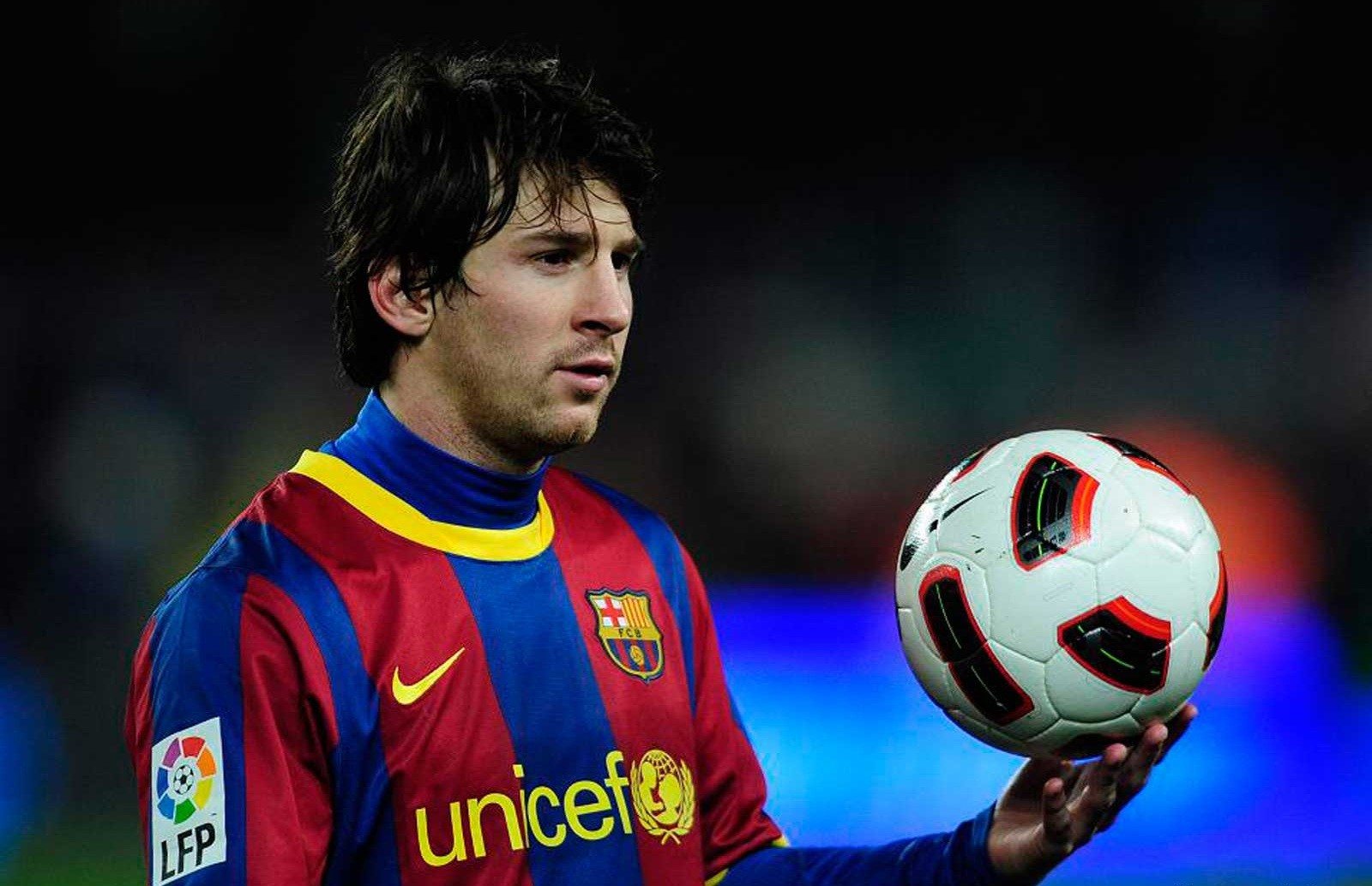
The Ageless Maestros: Unpacking the Secrets Behind Football’s Enduring Careers
Football, the beautiful game, is often perceived as a young man’s sport. A career typically spans a decade, perhaps a bit more, with players peaking in their mid-to-late twenties before the inevitable decline sets in, usually by their mid-thirties. The relentless physical demands, the constant threat of injury, and the sheer pace of the modern game seem to conspire against longevity. Yet, a remarkable cadre of players defies this conventional wisdom, continuing to grace the pitch at the highest level well into their late thirties, and even into their forties. These "ageless maestros" are not merely exceptions but living testaments to an evolving understanding of athleticism, discipline, and the profound mental fortitude required to sustain a top-tier career.
Their remarkable staying power isn’t merely a stroke of luck but a complex interplay of rigorous discipline, mental fortitude, tactical adaptability, and the ever-evolving landscape of sports science. This article delves into the various facets that enable these extraordinary individuals to prolong their careers, examining the physical, mental, and strategic elements that contribute to their enduring success.
The Evolution of Physical Preparation and Sports Science
Perhaps the most significant factor contributing to extended careers is the exponential advancement in sports science and physical preparation. Gone are the days when training consisted solely of running laps and rudimentary ball work. Modern football is a highly specialized, data-driven environment where every aspect of a player’s physical well-being is meticulously managed.
Nutrition: Elite footballers now adhere to highly personalized dietary plans, designed to optimize energy levels, aid recovery, and minimize inflammation. Carbohydrate loading, protein intake for muscle repair, and the precise timing of meals are all critical components. Sugary drinks, processed foods, and unhealthy fats are largely banished from their diets, replaced by nutrient-dense whole foods. This scientific approach to nutrition provides the fuel needed for high-intensity performance and faster recovery, preventing the metabolic slowdown that often accompanies aging.
Training Regimens: Training is no longer just about pushing the body to its limits. It’s about smart training. Bespoke strength and conditioning programs focus on injury prevention, core stability, flexibility, and maintaining explosive power. GPS tracking devices and heart rate monitors provide real-time data on player exertion, allowing coaches to tailor training loads to individual needs, preventing overtraining and burnout. Periodization – structuring training into cycles to peak at specific times – is meticulously applied, ensuring players are fresh for key matches while building sustainable fitness.
Recovery and Rehabilitation: The emphasis on recovery is paramount. Cryotherapy chambers, hydrotherapy, deep tissue massage, and advanced sleep monitoring are commonplace. These techniques significantly reduce muscle soreness, accelerate tissue repair, and combat fatigue, allowing players to bounce back quicker from demanding matches and training sessions. Furthermore, the understanding and treatment of injuries have undergone a revolution. State-of-the-art medical facilities, highly specialized physiotherapists, and advanced surgical techniques mean that career-threatening injuries of the past are now often recoverable setbacks, albeit with arduous rehabilitation processes. Players like Zlatan Ibrahimović and Luka Modric have famously returned from severe injuries to perform at an elite level, a testament to modern medical science and their own unwavering commitment.
The Indomitable Mental Fortitude and Passion
Beyond the physical, the mental game is paramount for longevity. The sheer grind of professional football – the constant travel, the pressure to perform, the media scrutiny, and the sacrifice of personal life – can be mentally exhausting. Players with long careers possess an extraordinary level of mental toughness, resilience, and an unquenchable passion for the game.
Discipline and Sacrifice: Maintaining peak physical condition for two decades requires unwavering discipline. This extends beyond training sessions to every aspect of life: sleep patterns, social engagements, and even holiday choices. These players make conscious sacrifices, prioritizing their careers above all else. This discipline is not just about avoiding excesses but about actively seeking marginal gains in every facet of their routine.
Love for the Game: At the core of every long career is a profound love for football. It’s the intrinsic motivation that drives them through grueling rehabilitation, through periods of poor form, and through the aches and pains that accumulate with age. This passion transforms the arduous work into a labor of love, making the commitment sustainable.
Resilience and Adaptability to Pressure: The ability to bounce back from setbacks – injuries, defeats, or periods of criticism – is crucial. Ageless players possess an inherent resilience, turning adversity into motivation. They also master the art of managing pressure, performing consistently under intense scrutiny, and maintaining focus season after season. Their experience often makes them unflappable, providing a calming presence for younger teammates.
Tactical Adaptability and Role Evolution
As the body ages, raw physical attributes like pace and stamina naturally decline. However, the mind often sharpens. Players with long careers are masters of tactical adaptability, evolving their roles on the pitch to compensate for diminishing physical capabilities by leveraging their experience, intelligence, and superior technical skills.
A classic example is Ryan Giggs, who began his career as a blistering winger, relying on raw speed and dribbling. As he aged, he transitioned into a central midfield role, where his vision, passing range, and footballing intelligence became his primary assets. He played fewer minutes but maintained a significant impact on games. Similarly, Francesco Totti, initially a free-roaming attacking midfielder or a "false nine," adapted his game in his later years to become a deep-lying playmaker or a super-sub, using his unparalleled vision and passing to dictate play.
Defenders like Paolo Maldini and Thiago Silva perfected the art of anticipation and positioning, reducing their reliance on outright speed. Goalkeepers, like Gianluigi Buffon and Iker Casillas, naturally have longer careers as their position is less physically demanding in terms of running, but their longevity is still remarkable, relying on sharp reflexes, leadership, and exceptional reading of the game. This ability to understand the game on a deeper level, to anticipate play, and to make intelligent decisions allows them to remain effective even when their legs aren’t what they once were.
Iconic Examples of Longevity
Let’s look at some of the most prominent figures who have defied the conventional career timeline:
-
Gianluigi Buffon (Goalkeeper): Played professionally for nearly 30 years, retiring at 45. His exceptional consistency, leadership, and dedication to physical conditioning allowed him to remain at the top level for Juventus and the Italian national team for decades. His position offers inherent longevity, but his commitment to training and recovery was legendary.
-
Paolo Maldini (Defender): A one-club man for AC Milan, Maldini retired at 41 after 25 seasons. Known for his elegance, tactical intelligence, and immaculate positioning, he transitioned from left-back to central defense, showcasing incredible adaptability. His dedication to fitness and injury prevention was exemplary.
-
Ryan Giggs (Winger/Midfielder): Spent 23 years at Manchester United, retiring at 40. His transformation from a speed merchant on the wing to a deep-lying playmaker in midfield is a textbook example of tactical evolution, extending his career far beyond what many expected.
-
Zlatan Ibrahimović (Striker): Retired at 41, having played for top clubs across Europe. Zlatan’s unparalleled self-belief, physical prowess, and unique playing style allowed him to dominate defenses even in his late 30s. His return from a severe ACL injury at 35 to continue scoring goals at the highest level was a testament to his incredible will and modern medical science.
-
Cristiano Ronaldo (Forward): Still playing at 39 in a top league. Ronaldo is perhaps the ultimate example of self-optimization. His obsessive dedication to diet, training, and recovery is legendary. He has continuously adapted his game, transitioning from a winger to a prolific goal-scoring forward, maximizing his efficiency in front of goal even as his explosive pace has slightly waned.
-
Luka Modric (Midfielder): Still a pivotal player for Real Madrid at 38. Modric defies the physical demands of central midfield with his incredible vision, passing range, and tactical awareness. His ability to control the tempo of a game and deliver crucial passes remains undiminished, a true maestro of the midfield.
-
Francesco Totti (Forward/Attacking Midfielder): The "King of Rome" played for AS Roma for 25 years, retiring at 40. His loyalty and ability to adapt his role from a dynamic forward to a deep-lying playmaker with incredible vision made him an enduring icon.
-
Javier Zanetti (Defender/Midfielder): The "Tractor" played for Inter Milan for 19 years, retiring at 40. Known for his incredible versatility, unwavering stamina, and leadership, Zanetti was a model of consistency and professionalism.
-
Pepe (Defender): Still playing at the highest level for Porto and the Portuguese national team at 41. Pepe’s remarkable aggression, defensive intelligence, and physical condition continue to defy his age, making him one of the oldest active outfield players in top-tier European football.
The Future of Longevity in Football
As sports science continues its relentless march, it’s plausible that careers extending into the late thirties and early forties will become more common, especially for players who adopt a holistic approach to their physical and mental well-being from early in their careers. The financial incentives also play a role; top players can command significant salaries even in their twilight years, motivating them to prolong their careers.
However, the increasing intensity and congested fixture lists of modern football present new challenges. The balance between maximizing performance and preventing burnout will be a critical area of focus for clubs and sports scientists.
Conclusion
The "ageless maestros" of football are more than just athletes; they are paragons of discipline, resilience, and adaptability. Their extended careers are not a mere coincidence but a testament to a confluence of factors: groundbreaking advancements in sports science, unwavering mental fortitude, an enduring passion for the beautiful game, and the strategic intelligence to evolve their playing styles. They serve as inspirations, proving that with dedication, smart management, and an insatiable desire to compete, the limits of what’s possible in professional sports can continually be pushed further, leaving an indelible legacy that transcends generations. As the game continues to evolve, these enduring legends remind us that true greatness often lies in the ability to not just perform, but to persist.
:max_bytes(150000):strip_icc()/451934088-56aa3b585f9b58b7d002c1a6.jpg)


